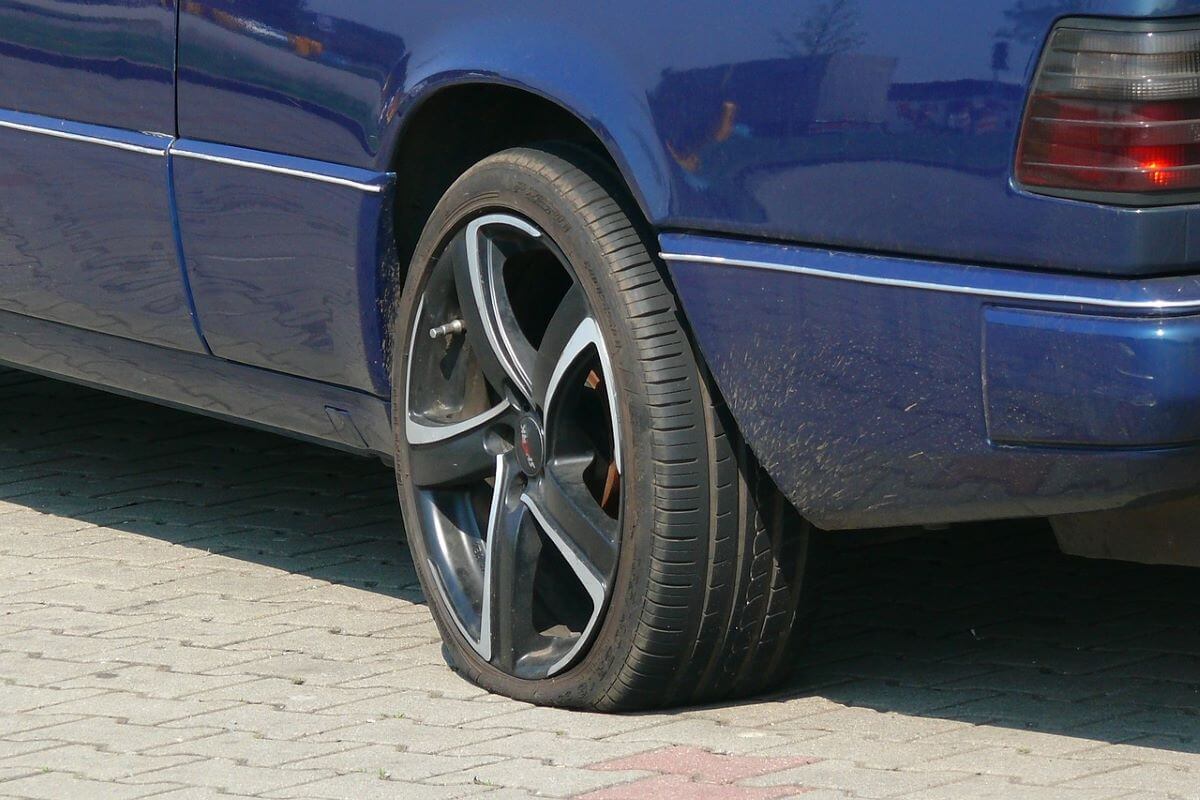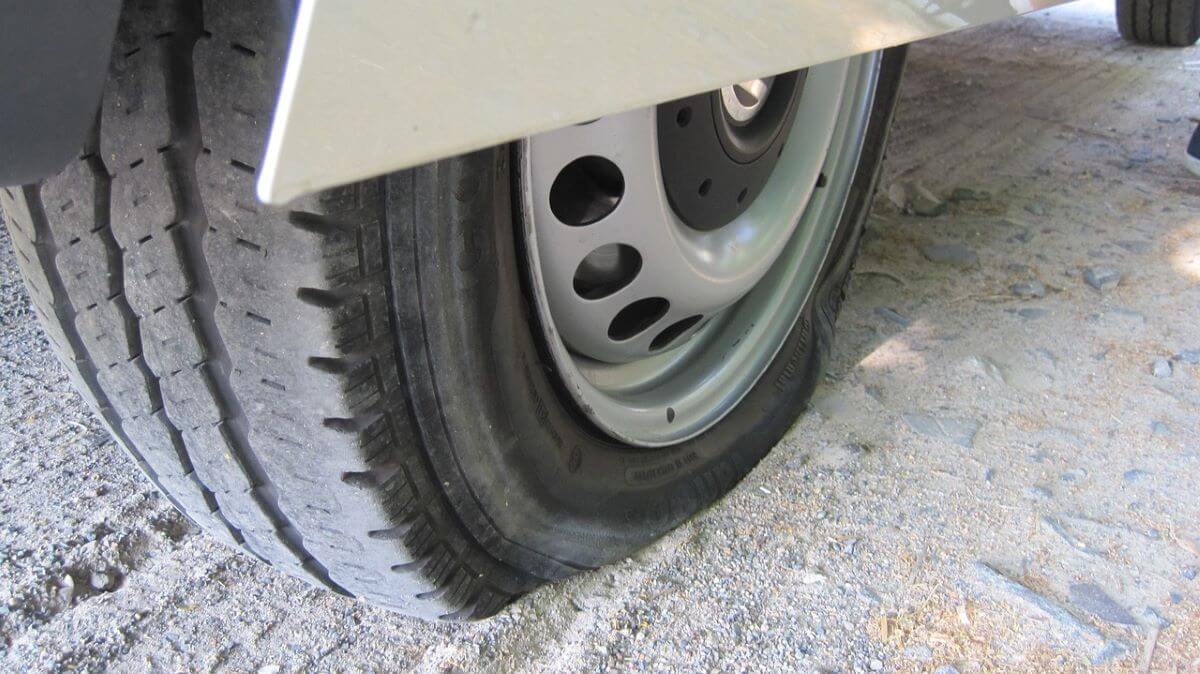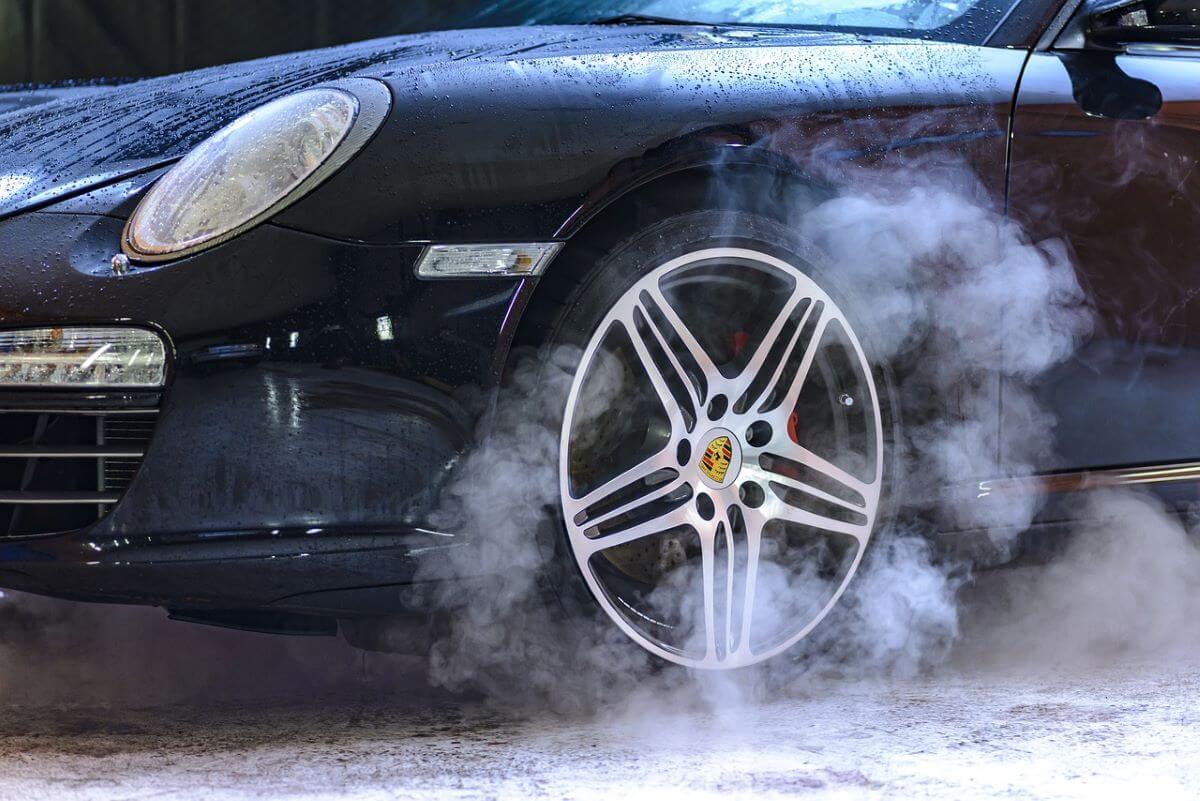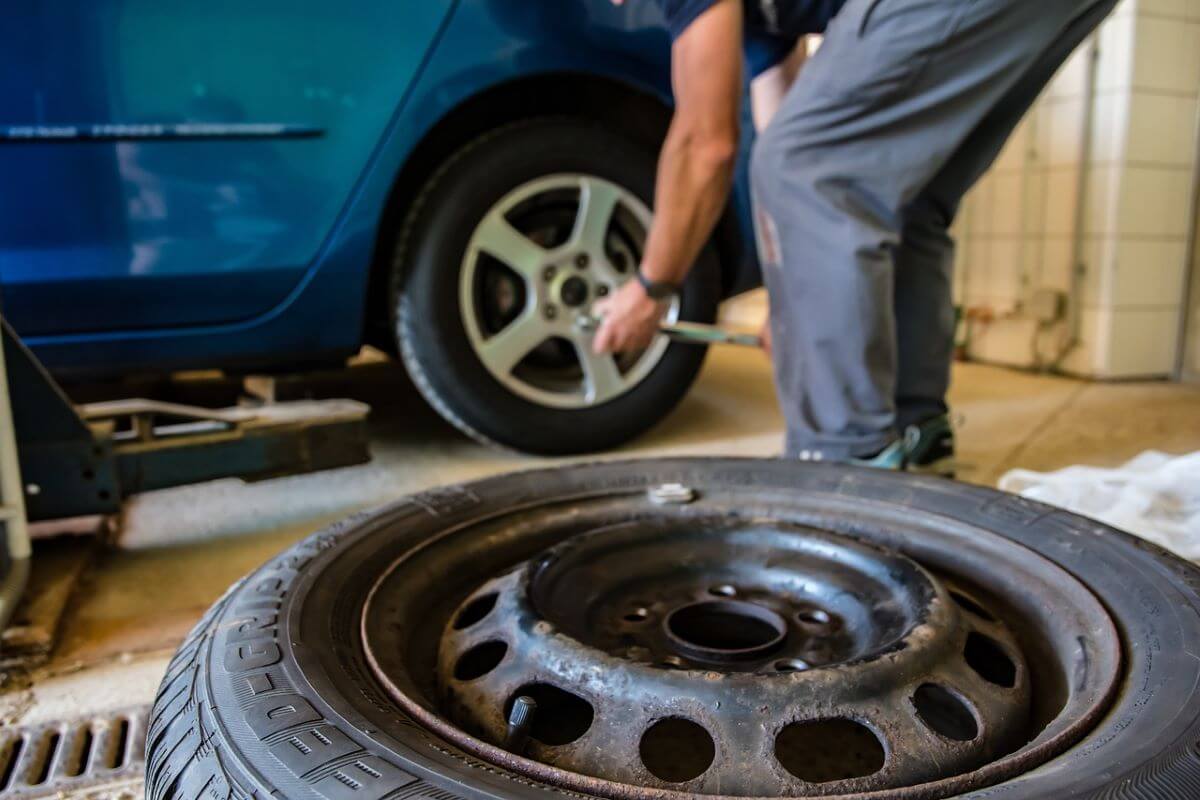At a glance:
- Preparation is key – always carry a spare in your boot as well as a wrench
- Stay calm and be sure to bring your car to a halt slowly and safely – we’ll guide you through how to do this
- Learn what actually causes a burst tyre, and how to avoid it happening in the future
- Understand when you might need to call for help, and which situations might require that
A tyre blow out is arguably one of the most frightening things to experience when driving, especially if it happens while you’re on the motorway. When it happens, the important thing is to try to remain calm and not slam on the brakes because you’re panicking, as this could lead to an accident.
Luckily, tyre blow outs aren’t very common, but even if you regularly check your tyres, sometimes the unexpected happens. This could be due to driving over sharp objects or debris – which is of course unpreventable in most cases.
When your tyre bursts, you should be able to either change it yourself or call for help to come and fix it. In the moment it happens though, it can be hard to figure out what to do. That’s why we’ve put together this guide explaining what to do, which will come in handy should it happen to you.
What will happen if your tyre bursts when you’re driving?
It’s a scary experience if your tyre bursts while you’re driving, particularly if you get a flat tyre on a motorway when you’re driving at speed, but it helps to know what to expect. You may find it’s your rear wheel that’s affected, while in some cases it’s your front tyre. Here’s what happens in both scenarios:
Rear-wheel affected
In the case where your rear wheel has been affected, it’s likely your car will begin to weave about, especially if you’re driving over 50mph. In order to slow down and stop at a safe place, hold the steering wheel firmly and let the car slow naturally. The most effective way to do this is to remove your foot from the accelerator and begin to move slowly down the gears before pulling into a safe place to stop.
Front-wheel affected
If a front tyre bursts, it can often cause more issues steering than if a rear-wheel were affected. You’ll need to steer to counteract the car pulling to one side. Again, it’s important not to brake suddenly using the foot brake. Try to decrease speed by allowing the vehicle to slow naturally. If you’re driving in good conditions and feel confident, you can gently pull the handbrake on and off. However, you should only attempt this if you’re strong enough to control the steering wheel with one hand.

What steps should you follow if your tyre bursts?
Here’s our step-by-step guide on what you should do when your front or back tyre bursts:
Maintain a steady driving speed and don’t brake sharply
The fact of the matter is, the lower your speed, the safer you’ll be in the event of a tyre blow out. A popped tyre when you’re driving at 50mph will be a lot less dangerous than one at 70-80mph. Once you’ve realised it’s happened, try and maintain a safe and steady speed, and whatever you do, don’t brake sharply! This will only unbalance your car and may cause it to swerve.
Remove your foot from the accelerator slowly
Instead, you’ll want to remove your foot from the accelerator slowly. Do not immediately remove your foot from the pedal, as this could cause a greater deceleration force. The force from a blown tyre is already strong enough that you’ll find yourself slowing down rapidly. Be sure to disengage cruise control if you have it engaged.
Try to keep driving in a straight line
The safest thing to do with a burst tyre is to keep the direction steady and in a straight line. Trying to turn your car will upset its overall balance, however, if you find it’s pulling to one side, you may need to gently pull the steering wheel in the opposite direction to keep it moving straight. This helps you to avoid drifting into the road or the opposite lane.
Don’t overcorrect
As mentioned, it’s important to maintain your vehicle’s overall stability, so avoid sharply turning your steering wheel or you could end up rolling over or driving into the opposite lane.
Allow your car to reach a gradual stop
Your car will start decelerating soon after your tyre has burst, but if necessary, use engine braking when you are going at a slow speed. When you’re able, use your indicators and pull over safely. Don’t stop in the middle of a road as you’re in danger of being rear-ended by a speeding car.
Put your hazards on, turn off your engine
Always pop your hazards on if your vehicle is stationary and temporarily blocking or obstructing traffic, but only use them long enough to ensure your warning has been observed. You must not use hazard warning lights while driving or being towed unless you are on a motorway or unrestricted dual carriageway and you need to warn other drivers of a hazard or obstruction ahead. Once your vehicle has safely stopped, turn off your engine.
Replace your tyre or call for help
Once you’ve safely stopped, consider whether you’re able to replace your burst tyre, or need to call for help.
Never pump air into your tyre once you’ve stopped
Once you’ve pulled to a stop, never try to unlock your brake or pump air into a heated tyre. During a stop like this, air is no longer cooling your tyre and especially during the first few minutes, the pressure in a heated wheel rises, so it can be dangerous to pump more air.

What actually causes a tyre blow out?
There are many reasons why you might suffer a popped tyre while driving, although more often than not it’s because of wear and tear or driving over glass or debris, which often can’t be helped.
Some of the other common reasons for a tyre blow out include:
- Driving with too low tyre pressure
- Air pressure in the tyre exceeding the level recommended by the tyre manufacturer
- Excessive tyre wear or age
- Overloading your car which can put pressure on your tyres and lead to a temperature rise, making the tyre overheated and more likely to blow out
- Defects on the original tyre
- Driving with a faulty steering system, causing the wheel to overheat, subsequently putting pressure on your tyres
How can you prevent a burst tyre?
Like most things in life, prevention is better than cure. Of course, there’s not much you can do at the time of the incident, but taking good care of your tyres, and choosing the right tyres, particularly for the time of year (such as winter tyres) can help reduce the chances of damage occurring. Knocking your tyres on a kerb or leaving them resting on something when parked can all affect performance.
It’s a good idea to check your tyre pressure regularly – and before every long journey. You can do this easily at any garage or service station and can often top them up for pennies. If you notice any problems with your tyres, always speak to a mechanic or trusted garage who can assess what might be causing problems.

Who should you call if you have a burst tyre?
If your situation is an emergency, for example you are injured or causing an obstruction in the road, always call 999 to get help. However, if you feel you’re in a safe situation, you should call roadside assistance for help.
This could be the RAC or another provider who will respond to your call and send someone to help fix the problem safely. It’s also a good idea to let a friend or family member know what’s happening, particularly if you have children with you when it happens.
If you happen to be near a garage, you could call them and see if they can assist you, as opposed to waiting for roadside assistance.



